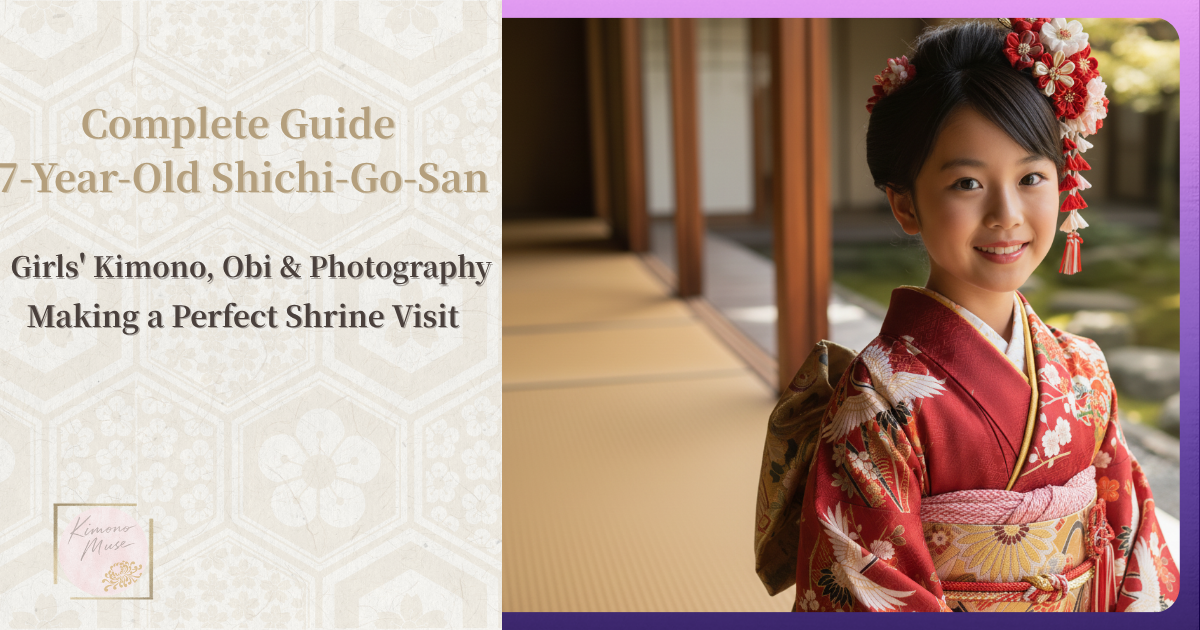The 7-year-old Shichi-Go-San is a special day for families to celebrate their child’s growth and pray for happiness in the years to come.
Seeing your daughter dressed in a colorful kimono tied with an obi, carrying traditional accessories such as a decorative purse and folding fan, will surely fill your heart with emotion.
In her slightly more grown-up appearance, you may find yourself smiling tenderly with pride.
In this article, we explain the meaning and origins of the 7-year-old Shichi-Go-San, offer tips on choosing outfits, and guide you through the flow of photography and shrine visits.
We’ve gathered helpful insights so you can welcome this precious day with peace of mind and create lasting memories with your child and family.
What Is the 7-Year-Old Shichi-Go-San?
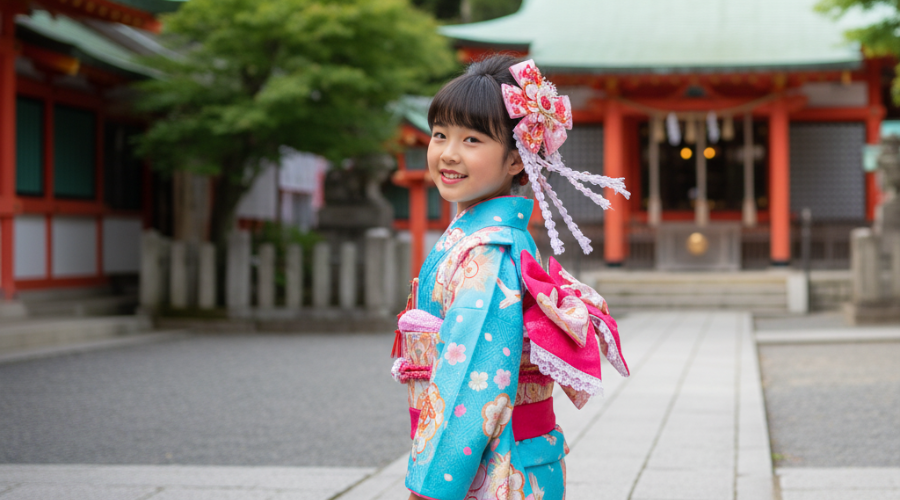
Shichi-Go-San is a traditional Japanese celebration to give thanks and pray for children’s healthy growth.
Among these milestones, the 7-year-old Shichi-Go-San originates from the ritual called Obitoki no Gi (“the ceremony of wearing the obi”).
In the past, young girls wore kimono fastened with cords, and this ritual marked the first time they tied an obi sash, symbolizing a step closer to adulthood.
From the Edo period onward, it became established as a celebration for girls, and even today it is cherished as an important milestone.
After the sweetness of age three and the dignity of age five, age seven reveals a strikingly more mature appearance.
For many families, seeing their daughter in a formal kimono tied with an obi brings both joy and a touch of deep emotion.
Preparation – Key Points for a Smooth Shichi-Go-San Celebration
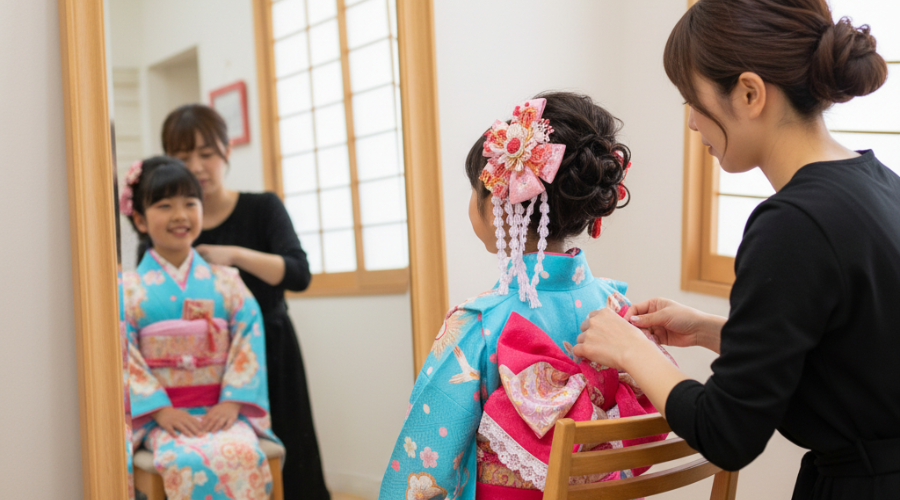
Shichi-Go-San is a special day to celebrate your child’s important growth.
To make it a truly memorable occasion, preparation in advance is essential.
From choosing the outfit to booking the photo session and arranging the shrine visit, there are many things to think about. But don’t worry—by keeping the key points in mind and planning step by step, everything will go smoothly.
In this section, we’ll guide you through the overall preparation for Shichi-Go-San as well as the important details for each part, so your child can enjoy the day with a smile.
Use this as a helpful reference to plan in the way that best suits your child and your family.
Outfit Preparation – Kimono or Western-Style Clothing?
Among all the preparations for Shichi-Go-San, choosing the outfit is one of the most exciting parts for families.
Whether you decide on the elegance of traditional kimono or the ease of Western-style clothing, either choice will highlight your child’s individuality and create lasting memories.
In this section, we’ll introduce the features of both styles and share tips to help you make the best choice.
▶ Kimono: Elegance with Kimono and Obi
When it comes to the 7-year-old Shichi-Go-San, the standard is the gorgeous look of a yotsumi kimono tied with an obi.
The sight of a child taking a step closer to becoming a grown woman is sure to be a moving moment for the family.
By adding colorful accessories such as a hakoseko (decorative purse), obijime (obi cord), shigoki sash, and a folding fan, the outfit becomes even more glamorous.
These accessories are not just decorations, but important items that create the special feeling unique to Shichi-Go-San.
Thinking about the overall coordination is also one of the enjoyable parts.
The choice of kimono patterns is also an important element in creating a memorable appearance.
- Classical patterns (e.g., cranes, pine, bamboo and plum, handballs, court carriages) reflect the beauty of Japanese tradition and create an elegant and refined atmosphere.
Their universal beauty, loved across generations, is their greatest charm. - Modern designs (e.g., large camellias, roses, check patterns) highlight your child’s individuality and allow her to enjoy a stylish look with a sense of trend.
Of course, incorporating your child’s favorite colors and patterns is wonderful, but it is also good to consider the fabric and comfort so she can spend the day with ease.
Whichever you choose, it will surely become the most memorable and beautiful appearance for your family.
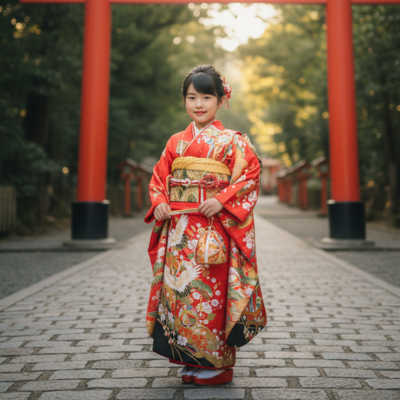
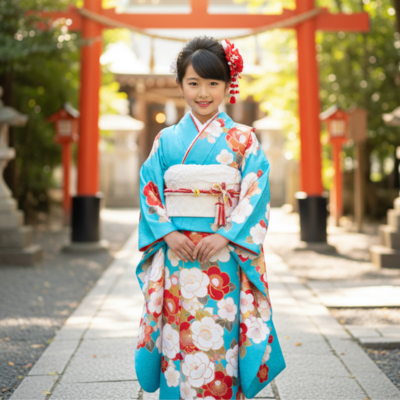
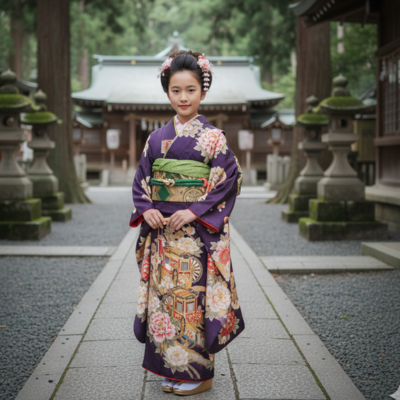
▶ Western Style: Light and Elegant with Dresses or One-Piece Outfits
While traditional kimono is beautiful, more families are choosing Western-style outfits for their ease and comfort.
Especially for active seven-year-old girls, Western attire is an appealing choice for parents who wish their child to enjoy a long day of shrine visits and photo sessions with natural smiles and without stress.
Dresses and one-piece outfits combine both elegance and cuteness, making them perfectly suited for the special occasion of Shichi-Go-San.
By choosing designs decorated with tulle, lace, and ribbons, your daughter can spend the day feeling like a princess.
When selecting colors and designs, it is of course wonderful to reflect your child’s preferences, but opting for subdued designs that can also be used for everyday wear allows the outfit to shine again at later events such as recitals or casual outings.
Another advantage is the comfort and ease of movement.
Even children not used to zōri sandals can spend the day without worrying about their feet, making long shrine visits and photo sessions less tiring.
Adding festive touches with hair accessories is also a lovely way to enhance the look.
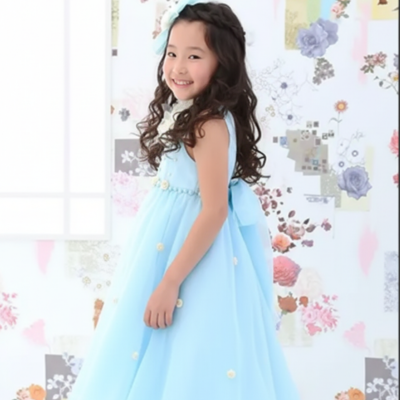
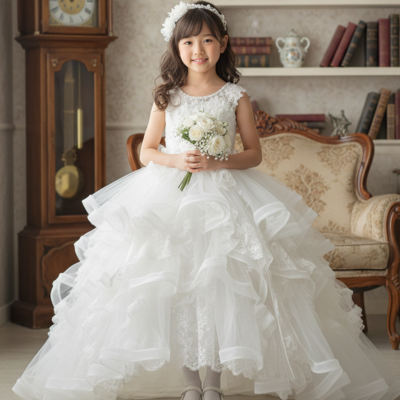
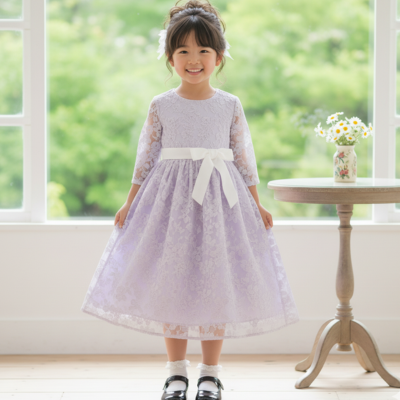
Shrine Visit: Flow and Key Points
At last, it’s time for the shrine visit.
Since this is a precious moment to pray for your child’s healthy growth, knowing the flow in advance will help you avoid stress and spend the day with peace of mind.
1. Reception and Prayer Ritual
When you arrive at the shrine, first complete the reception and apply for the prayer ritual.
Some shrines require advance reservations, so checking beforehand will make things smoother.
During the prayer, there will be a quiet waiting time, so it helps to tell your child in advance, “This is the time to make wishes to the gods.”
2. Manners of Worship
At the main hall, the standard practice is “two bows, two claps, one bow” (ni-rei ni-hakushu ippai).
At age seven, children are usually able to understand the etiquette and join adults in worship respectfully.
Watching a video together beforehand is a good way to practice and make the experience more meaningful.
3. Special Notes for Seven-Year-Olds
- Care for health and fatigue: Even at seven, spending long hours in formal kimono or dress can be tiring.
Pay attention to meal portions and timing, especially with obi sashes, and watch for signs of discomfort.
It’s also reassuring to know in advance where your child can take a short rest if needed. - Unfamiliar clothing: Kimono, dresses, zōri sandals, or shoes with small heels can make tripping or soiling the hem more likely.
Encourage slow walking, and hold hands on stairs.
Having simple fix-it items like safety pins is helpful for unexpected wardrobe malfunctions. - Keeping them engaged: Popular shrines may be crowded, with long waiting times.
Seven-year-olds are curious but can get bored quickly.
Small snacks, drinks, or toys can be useful, but remember that prayer time requires quiet behavior. - Photography etiquette and permissions: Each shrine has its own rules, and photography during the prayer ritual is usually prohibited.
To avoid trouble, check the official website in advance and follow the rules while preserving precious memories.
For more detailed guidance on shrine etiquette and general tips, please see our Complete Guide to the 5-Year-Old Shichi-Go-San|Boys’ Haori and Hakama, Photography, and Shrine Visit, where we explain the flow and manners in greater depth.
Events of the Day: Photography and Family Meal
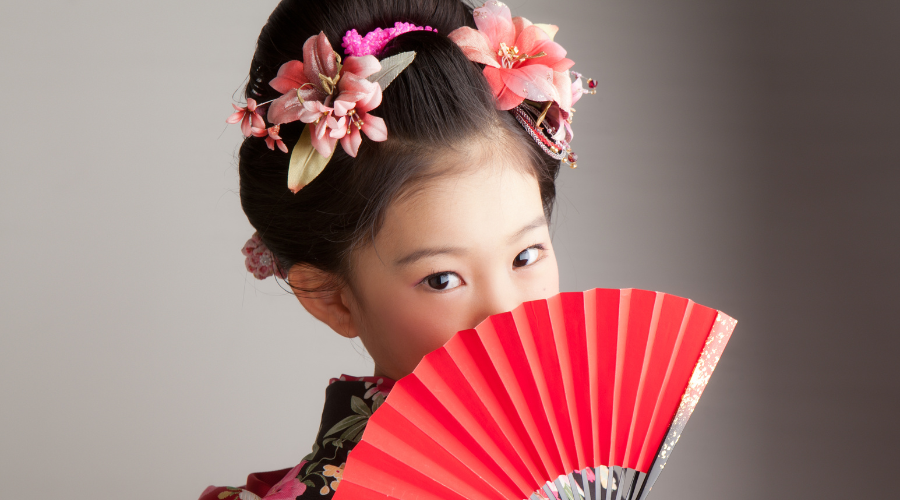
The highlights of the Shichi-Go-San celebration day are photography and sharing a family meal.
At age seven, children can pose and express themselves more maturely, making the photos all the more special.
A meal with grandparents and relatives also becomes a warm moment where the whole family can celebrate growth together.
In this section, we’ll share tips to make both photography and family gatherings even more enjoyable and memorable.
Tips for Commemorative Photography
At age seven, children can understand how to pose and express themselves in front of the camera, giving you more variety in photos.
This is a precious age where a more mature expression appears alongside the innocence of childhood.
Capturing both sides will make the memories even more meaningful when you look back later.
- Encourage natural smiles
Treat posing like play or give your child a favorite accessory to hold. This makes it easier to capture genuine smiles. - Make use of different locations
Try taking photos not only at the shrine’s main hall, but also along the paths, in the gardens, or at other scenic spots. The variety will make your album more enjoyable. - Don’t forget family photos
Solo shots are important, but family portraits are just as special. Including siblings or grandparents creates irreplaceable memories of the day.
Celebrating with a Family Meal
Shichi-Go-San is a milestone where the whole family comes together to celebrate a child’s growth.
After the shrine visit and photography, sharing a meal with grandparents and relatives becomes a heartwarming way to mark the day.
At age seven, children are able to join conversations more easily and may even express their own joy by saying, “Today was so much fun!”
Showing them in their formal attire is also a wonderful gift for grandparents, who will deeply cherish the moment.
The meal doesn’t have to be formal. Whether at a restaurant, a traditional inn, or simply at home, the best style is the one that suits your family.
What matters most is being together and wholeheartedly celebrating your child’s growth.
For tips on coordinating with grandparents and planning family meals, please see this article.
Frequently Asked Questions: A Guide to 7-Year-Old Shichi-Go-San
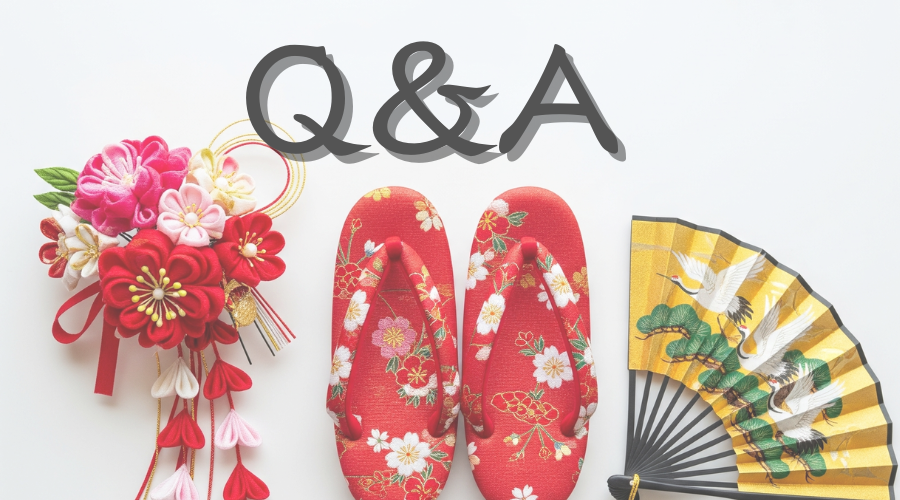
The 7-year-old Shichi-Go-San celebration often brings many questions for parents—from clothing and hairstyles to the flow of the day.
Here, we answer common concerns and provide tips to help your family enjoy the celebration with peace of mind.
**Q1. Does my daughter have to wear a long-sleeved kimono (furisode) ?**
A: Traditionally, yes, but it is not mandatory. Some families choose dresses or semi-formal outfits. The most important thing is choosing attire that allows your child and family to feel comfortable and enjoy the day.
**Q2. What about hairstyles and hair accessories?**
A: Many families go to a salon, but a simple updo or decorative hair accessory at home can also create a festive look. Prioritize your child’s comfort over elaborate styles.
**Q3. Should we do the photo session and shrine visit on the same day?**
A: Doing both on the same day can be overwhelming. At age seven, the outfits and preparations take more time, so many families choose to schedule photography and shrine visits separately. A relaxed schedule makes the day smoother.
**Q4. Do we have to invite grandparents and relatives?**
A: Not necessarily. If it’s difficult to gather a large group, sharing photos or videos of your child’s special day is also a thoughtful way to celebrate. Choose what works best for your family.
**Q5. How much should we prepare for the offering (hatsuho-ryō)?**
A: It depends on the shrine, but the general range is between 5,000 and 10,000 yen. To be sure, check the shrine’s official website for details, including how to prepare the envelope and whether reservations are required.
**Q6. What items are useful to bring on the day?**
A: For a 7-year-old, light snacks, drinks, or small toys/books can help during long waits. Safety pins for quick kimono fixes or small makeup touch-up items (if wearing Western attire) are also very handy.
Conclusion
The 7-year-old Shichi-Go-San celebration is a precious milestone for your daughter and a deeply memorable day for the entire family.
From attire and photography to the shrine visit and family meal, there are many things to prepare, but with thoughtful planning each step can be enjoyed without stress.
What matters most is not perfection, but cherishing your child’s unique self together as a family.
May this year’s Shichi-Go-San become a day filled with smiles, joy, and beautiful memories that reflect your family’s own style.
Related Articles
▶ Complete Guide to Shichi-Go-San at Age 3
▶ Complete Guide to Shichi-Go-San at Age 5
✿ Column: Fumi’s Kimono Diary ✿
The 7-year-old Shichi-Go-San celebration is often remembered for its elegant kimono with a beautifully tied obi.
Seeing a daughter who only recently seemed so young now looking more mature can fill a family’s heart with pride and emotion.
Looking through family albums, you may find photos of your own Shichi-Go-San, or even those of parents and grandparents.
It is a moment that reminds us this tradition has been passed down through generations.
Shichi-Go-San is not only about the attire on the day itself, but also about the preparations and the reflections afterward—moments that together weave truly special memories for the whole family.
